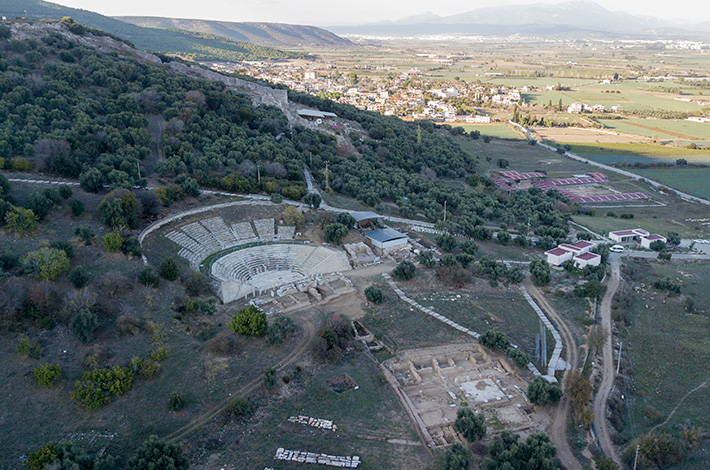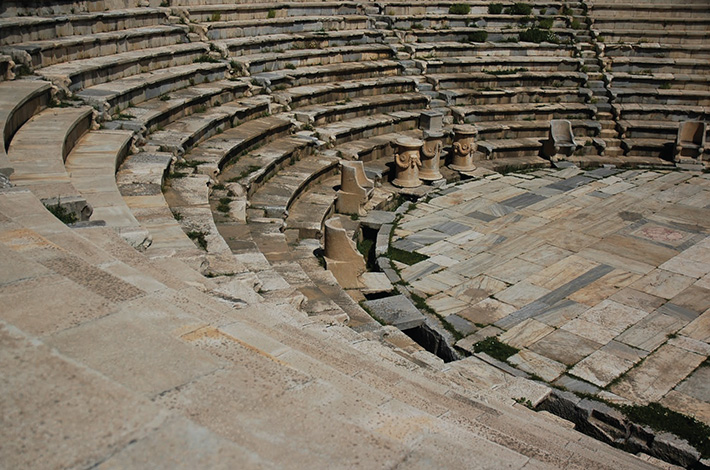The ancient city of Metropolis is situated between the villages of Yeniköy and Özbey in Torbalı, Izmir. It is backed by Mount Gallesion, named after the mother goddess Meter Gallesia. Traces of early settlement in the Metropolis area date back to the Neolithic period, specifically in Tepeköy, Dedecik, and Kuşçuburun. During late antiquity, Metropolis became an episcopal centre and a defensive fortress was constructed around the city. However, due to wars and economic reasons, the city began to decline. In the 14th century, the region came under the rule of the Principality of Aydınoğulları, but Metropolis could no longer maintain its former position and was relocated to Torbalı. The Theatre The theatre was constructed during the Hellenistic period and underwent renovations during the Roman period, including the addition of a marble floor and expansion of the stage building. It was restored between 2000 and 2001 and can accommodate approximately 4,000 spectators. The Peristillium House The house was found on the southern slope of the ancient theatre during excavations to explore the link between the theatre and the city centre. It has a peristyle-style courtyard and provides insight into civilian life during the Roman period. The central courtyard is large and covered with marble slabs, with four rows of columns surrounding it on each side. The colourful wall plasters and rich findings in the spaces surrounding the courtyard indicate that the structure belonged to a wealthy citizen. The Acropolis The Acropolis covers an area of 16,000 m2 and is located in a strategic and secure position, dominating the entire Torbalı Plain. It has been inhabited since 3000 years B.C. and was surrounded by strong fortifications during the Hellenistic period, as determined by excavations and sondages. The Bouleuterion, also known as the Parliament House, was a public building where city councillors would convene to discuss and make decisions on various issues. The Metropolis Bouleuterion, built in the 2nd century B.C., was square-shaped and had a capacity of 350 people. The Stoa Stoas were multifunctional buildings used for religious ceremonies, political and philosophical meetings, commercial and cultural events. This stoa, built in the 2nd century B.C., is supported by two rows of Doric columns. The names of the wealthy individuals who financed the construction of the building are inscribed on the columns at the front. The Upper Baths and the Gymnasium In antiquity, gymnasiums were public structures that provided physical and intellectual education to young people. The Metropolis Gymnasium, mentioned in inscriptions from the period of Augustus, was administered by a woman named Alexandra Mirton according to a 2nd century B.C. epigraph. Lower Bath-Palaestra is a magnificent Roman Imperial Period bath building with a marble-clad interior facade. Specially designed stepped pools are located on the sides of the Central Hall.
METROPOLIS ARCHAEOLOGICAL SITE



